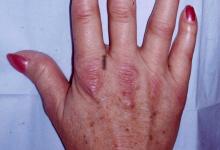Diabetes Prevention with Hydroxychloroquine in Sjogren’s Save

A Taiwanese insurance claims analysis looked at hydroxychloroquine (HCQ) use in primary Sjögren syndrome (pSS) and showed that HCQ exposure significantly reduces the risk of new onset diabetes in pSS. Conversely, higher doses of glucocorticoids increased the risk of diabetes, but concurrent HCQ use mitigates this risk in a dose-dependent manner.
Data was extracted from the Taiwan’s National Health Insurance Research Database from 2006 to 2015, and looked at the DM risk associated with the use of HCQ and glucocorticoids.
Among pSS patients (4,874 HCQ users and 2,437 HCQ nonusers), 497 patients developed DM after an average follow-up of 4.89 years.
Compared to those not on HCQ, HCQ use significantly lowered risk for DM (adjusted hazard ratios (aHRs):
- HCQ 151–350 mg/d (aHR 0.60, 95% CI: 0.454–0.794)
- HCQ ≥ 351 mg/d (aHR 0.326, 95% CI: 0.246–0.433), respectively)
High-dose glucocorticoids were linked to increased DM risk (aHR: 1.833, 95% CI: 1.410–2.383).
However, if patients were on high-dose HCQ (> 350 mg) and GC, the DM risk was mitigated (aHR: 0.632, 95% CI: 0.421–0.948, P < 0.01).
HCQ exposure has been shown in RA and lupus to also reduces the risk of developing diabetes.
This study did not assess the clinical efficacy of HCQ on other manifestations of pSS. While many guidelines suggest the use of HCQ for treatment of Sjogren’s joint complaints, there is scant proof of such efficacy with many international guidelines having varied conditional recommendations regarding HCQ.










If you are a health practitioner, you may Login/Register to comment.
Due to the nature of these comment forums, only health practitioners are allowed to comment at this time.